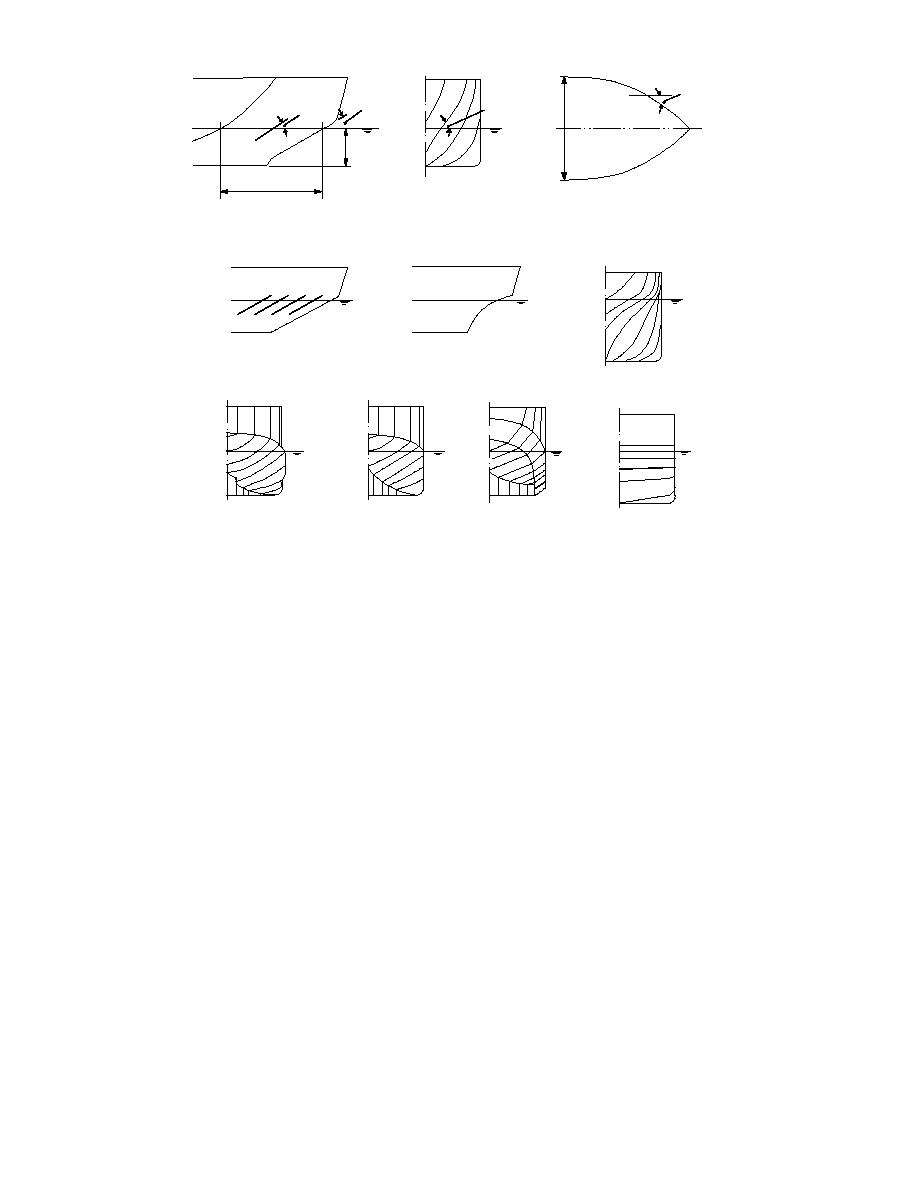
Waterline
Flat
Buttock
Flare
Angle
of Side
Stem
Angle
Angle
Angle
B
H
Lf
Figure 7. Main features of bow forms (after Dick and Laframboise 1989).
ConcaveStem
Straight Stem
(White Bow)
with Parallel Buttocks
High Frame Flare Angles
(Melville Bow)
Spoon Bow
Semi-spoon Bow
Flat Family
Thyssen-Waas Bow
with Reamers
with Chines
Figure 8. Different shapes of icebreaking bows (after Dick and Laframboise 1989).
Spoon bow with reamers
onstrated by the Moskva-class icebreakers in the
The spoon-shaped bow has been more efficient
1960s, and the Urho-class Baltic icebreakers in the
because this shape allows a constant frame flare
1970s.
angle throughout the bow length. As mentioned
earlier, this shape was used in the past, but its use
was discontinued because of its high resistance in
Concave stem (White bow)
heavily snow-covered ice, and its tendency to push
Although the concave stem had been used in
broken ice in front of the ship. With the introduc-
earlier icebreakers, R. White developed this par-
tion of bubbler systems or water wash systems,
ticular shape in 1969 for efficient icebreaking and
these problems have been overcome.
ice clearing. This bow shape was used in the U.S.
A modification of this shape was reintroduced
icebreakers Polar Star and Polar Sea, built in the
mid-1970s, in the Canadian icebreaking cargo ship
on the Canadian icebreakers Canmar Kigoriak, built
Arctic, built in the late 1970s, and in the Canadian
in 1979, and Robert Lemeur, built in 1981. The ex-
R-class icebreakers, built between 1978 and 1984.
tended beam at the shoulder (reamers) with the
Because of the concave stem, this bow shape has
abrupt change in shape eliminates midbody resis-
higher frame flare angles close to the stem.
tance by cutting a wider channel in ice, but it causes
extra resistance in open water. Recently, this shape
was also used in the European icebreakers Oden,
High flare angles (Melville bow)
This shape was developed to reduce the
Kapitan Nikolayev, Finnica and Nordica. The hull
icebreaking component of ice resistance. Recently,
form of the Finnish multipurpose icebreakers
the Canadian icebreaking cargo ship Arctic was
Finnica and Nordica is shown in Figure 9, which
modified to this type of bow, and its performance
also shows the icebreaking stern and the bi-direc-
increased from 1 to 4 m/s (2 to 8 knots) in 1-m-
tional reamers on the sides.
thick ice.
9



 Previous Page
Previous Page
